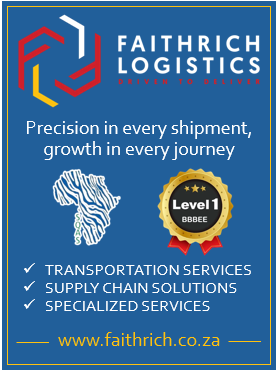South Africa’s transport conditions have shown notable pockets of improvement in recent years, supported by infrastructure investments, operational partnerships and targeted national interventions. While these gains mark encouraging progress, they stem from a relatively low operational base.
Continued improvements are needed as industrial supply chains remain impacted by persistent security concerns, limited resources, port congestion, and aging road infrastructure.
Logistics has become a test of resilience and innovation. There’s better coordination in certain areas, notably around Richards Bay and some rail corridors, but the system remains under considerable strain. The challenge is to build flexibility and resilience into logistics networks so that when disruptions happen – and they still do – operations can continue.
Transport logistics and infrastructure play a critical role in supporting South Africa’s economy. For many industries, reliability in transport is the difference between maintaining stable production and facing significant delays. In sectors like mining and agriculture, transport is both a cost driver and a strategic risk factor.
Rail and port improvements show promise, even as road conditions present ongoing challenges
Freight rail remains an important backbone of South Africa’s bulk commodity movement. For Omnia, about 50% of its main raw material – ammonia – moves by rail. While ongoing security issues like cable theft, and shortages of locomotives and drivers continue to hamper efficiency, collaboration across the value chain is making a difference.
Through the National Logistics Crisis Committee (NLCC), Omnia has worked closely with Transnet and Sasol to move trains more efficiently between Sasolburg, Secunda and Richards Bay. Previously, operators worked in silos. Now there’s better coordination, which means trains move more efficiently. It’s not perfect, but it’s progress.
Port performance tells a similar story. Container handling in Durban has seen improvements, but congestion and long waiting periods – sometimes up to 10 weeks for certain shipments – remain a challenge. There are areas though, like Richards Bay, that work really well and have become a more stable node, helping ease pressure on imports of key industrial inputs.
While rail and ports show some positive movement, the road network has emerged as a more significant risk factor. Because of rail constraints, more volume is pushed onto road — but the infrastructure was never designed to carry this load. This results in heavy wear and tear, which further compounds safety concerns and slows turnaround times.
Resilience through diversification
For Omnia and many other operators, resilience means not relying on a single mode of transport. Over the past decade, the company has expanded its fleet of rail tankers from 160 to 205, ensuring greater control over its core movements. It has also added road tankers and invested in upgrades at Richards Bay and Sasolburg to reduce turnaround times.
We’ve learned that building redundancy into the system is crucial. If one route or mode goes down, another must be ready. This flexibility helped Omnia maintain deliveries during significant rail disruptions in 2022/23, when many operators declared force majeure. It’s about having options.
Technology and collaboration at the centre
One major shift underway is the integration of real-time logistics visibility. Omnia is currently rolling out a logistics control tower to track its road and rail footprint, which exceeds 600 trucks per day during peak periods. This allows faster decision-making, dynamic rerouting, and improved communication with customers and partners. Most importantly, the tower contributes to improved safety by providing better oversight of vehicle movements and enabling quicker responses to potential risks.
The company also collaborates with multiple logistics service providers, participating in industry knowledge-sharing platforms and using shared safety and security networks to navigate operational risks such as protest-related disruptions. We’re part of a much larger ecosystem. The future of logistics in South Africa depends on how well industry and the public sector work together.
The next phase of innovation will see the logistics control tower extended across all modes of transport and logistics partners, offering one central view of the entire network. We’ve seen what coordinated visibility can do. The next step is to scale it.
South Africa’s transport system may still face structural pressures, but cooperation, technology and diversification are gradually shifting the operating landscape. There’s still a long way to go, but the trajectory is moving in the right direction.

Jacques De Villiers, Executive: Manufacturing, Operations and Supply Chain at Omnia







